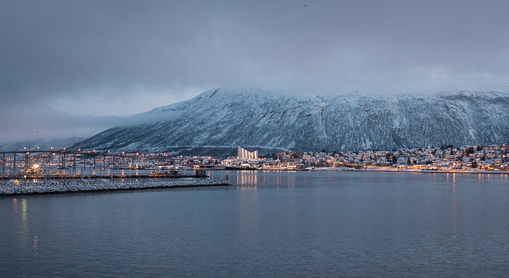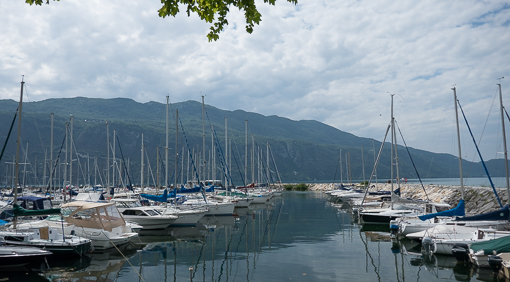For the first night of this short trip, we stayed in Andermatt (1437 m). It is a mountain village in the canton of Uri, and has been the historical center of north-south and east-west traverses of Switzerland.

The village is connected by three Alpine passes: the Oberalp Pass (6,706 ft; 2,044 m.) to the east connecting the Surselva in the canton of Graubünden, the St Gotthard Pass (6,909 ft; 2,106 m.) to the south connecting with the Valle Leventina in canton of Ticino, and the Furka Pass (7,992 ft; 2,436 m.) to the west connecting with the Obergoms in canton of Valais, where we came from the previous day. To the north the steeply descending Schöllenen Gorge links Andermatt with Göschenen (1080m, 3540 ft).
I picked this piece of music (from an old Peter Greenaway film) to accompany us to mountain pass number 3.
It appears that Andermatt is undergoing an ambitious construction program to expand it into a luxury mountain resort. We stayed at the new Radisson Blu Hotel which is housed in a multi-storey complex that includes luxury apartments (as holiday homes) and a concert hall. Sue really enjoyed the hotel’s spa and very modern 4-lane stainless steel swimming pool with turn markings.

Driving on the new third Devil’s Bridge (Teufelsbrücke, built 1958) over the river Reuss, we noticed the graphic on the left (see photo below). Dozens of medieval stone arch bridges (also named Devil’s Bridge) in Europe were built with heroic efforts given the challenging conditions like here, where legend has it that the local populace made a bargain with the devil for the bridge in exchange for their souls. An older second bridge built in 1830 is situated underneath it and the first wooden bridge across Schöllenen Gorge was built around 1220.

Our plan on the second day was to drive over to the St Gotthard Pass but we took a wrong turn and descended the Schöllenen Gorge to Göschenen. Located at the northern end of the Gotthard Road Tunnel and the Gotthard Rail Tunnel lies Göschenen and its railway station. The village grew up around a bridge over the Reuss. As a result of our unintended detour, we had to joined the A2 motorway and entered the Gotthard Road Tunnel heading South in the direction of Italy.

Our course change was irreversible since we did not notice any place to turn around before entering the tunnel. Fifteen minutes later, we emerged from the tunnel (17 km, 10.5 miles) outside the town of Airolo (see below) in the Canton of Ticino. The tunnel was constructed in 1980 and was the longest in the world at that time. It runs entirely within Switzerland, consists of only one bidirectional tube with two lanes and is notorious for traffic jams. I was glad that traffic was moving smoothly through the tunnel on that day. Unlike the Grand San Bernard tunnel which crosses the Swiss and Italian border further west, this tunnel is apparently free as long as you have paid the annual fee for motorway access (vignette automobile).

To get to the St Gotthard Pass, we drove all the way back up to the top from the southern side of the Alps, using initially the old road – Tremola San Gottardo – which is the longest road monument in Switzerland and like old buildings, it is listed in an inventory of historic roads.
Looking back at Airolo and the Leventina valley.

It is also one of the highest paved roads in Europe. Located on the left side of the Val Tremola mountain, in one stretch over a length of four kilometers it climbs a height of 300 meters in 24 hairpin bends.

Sue was driving (and I was busy photographing everything) – there were just endless twists and turns. Half way up, we joined the National Road 2, expecting that the now-unimportant road to be less maintained, but it was pristine, looking like when it was first paved in 1951. For more information on this road, click here for the website of History of Airolo.

This detour was not planned, but we ended up seeing some spectacular sights on the way down the Schöllenen Gorge and during the climb from Airolo (1,175 m; 3,855 ft) back up to the St Gotthard pass (Passo del San Gottardo) at 2,091 m (6,860 ft).

Once we reached the pass, the view opens up to a high plateau. There is a cafe/bar (biker’s meeting place), hotel, restaurant, hospice, souvenir shop, museum, historical fortress and several small lakes.

As it was a nice day, the parking area was crowded with cars and a few tour buses, including a Swiss Post Bus.

It was the busiest mountain pass we have seen for the entire trip. Among the five passes, the quietest was Furkapass (click here to see our previous post).

A chapel dedicated to Saint Gotthard of Hildesheim (960-1038 AD, canonized 1131), who was considered the patron saint of mountain passes, was built on the southern slope of the pass and consecrated by the archbishop of Milan in 1230. The pass soon became known after the saint, by as early as 1236. For such a historical place, it was a shame that we did not get to see the Museo Nazionale del San Gottardo (photo below) which was closed for renovation.

The pass is a continental divide between the Rhine, which flows into the North Sea and the river Ticino towards Milan, which after leaving Switzerland flows into the Po and ultimately into the Adriatic Sea.

We saw quite a few wind turbines being installed here, understandably a rather windy place (not on the day we visited). Some were not fully installed. What we did not see here was the fortress – Sasso – which required a fee for entrance. In 1886 the first fortress was built and many secrets surround the buildings which include miles of corridors, elevators, bunkers, and gun stands. Even a hospital lies hidden in the rock.

A set of bronze statutes remind us of the pilgrims, traders, tourists and mountain guides who have been passing through here for more than a thousand years.

We left the St Gottard pass around midday, headed back towards Andermatt, and continued our journey eastward towards the fourth and fifth mountain passes – Oberalpass and Julierpass, before our destination – St Moritz.

















































































































































































 There is a small lake, a cheerful, rusty sculpture, a restaurant and a hotel at the pass.
There is a small lake, a cheerful, rusty sculpture, a restaurant and a hotel at the pass.






















































 We were in awe of this late baroque Rococo decorations.
We were in awe of this late baroque Rococo decorations.





 Scrolling curves, gilding, white and pastel colors, sculpted molding, and trompe l’oeil frescoes – this church has every element of Rococo.
Scrolling curves, gilding, white and pastel colors, sculpted molding, and trompe l’oeil frescoes – this church has every element of Rococo.
























































